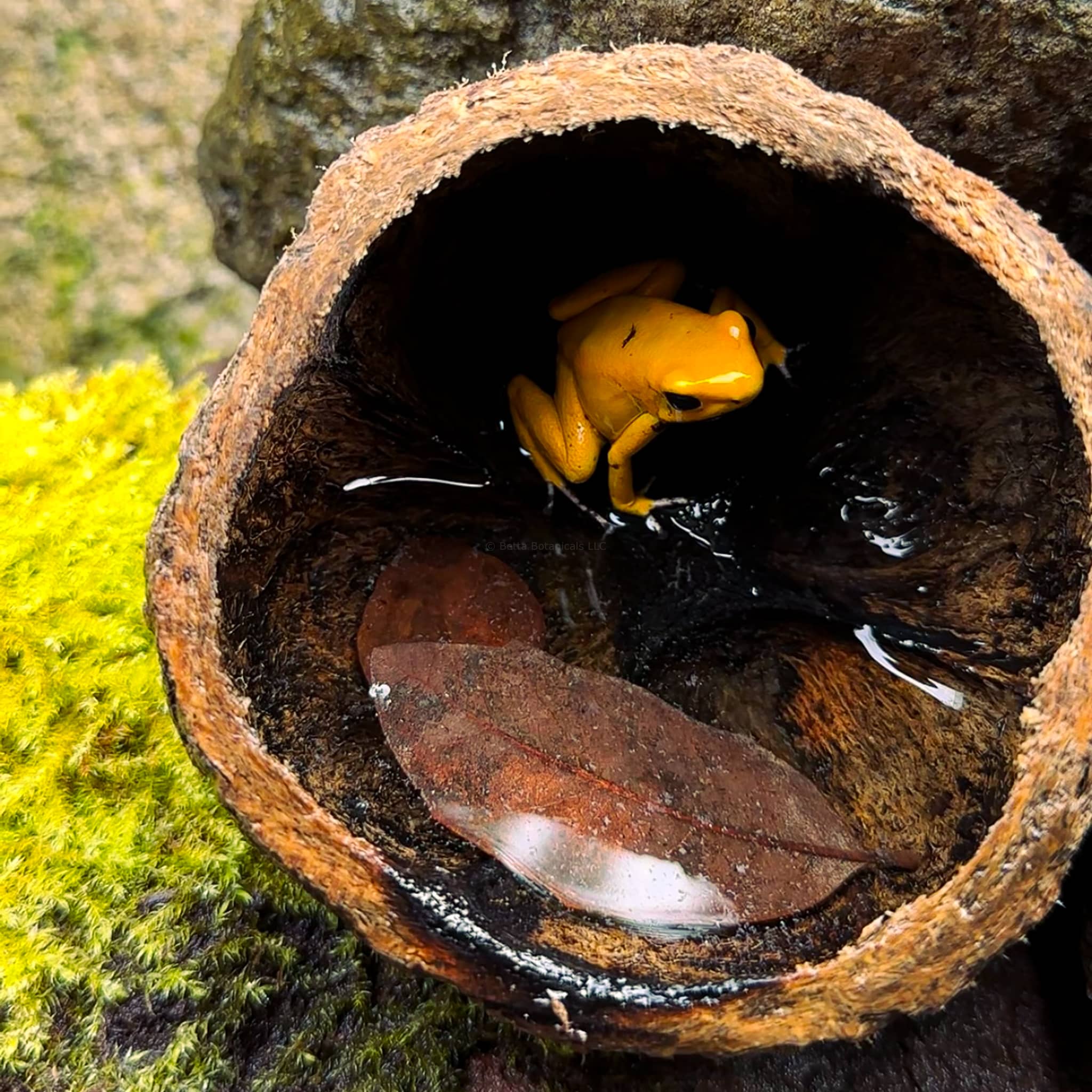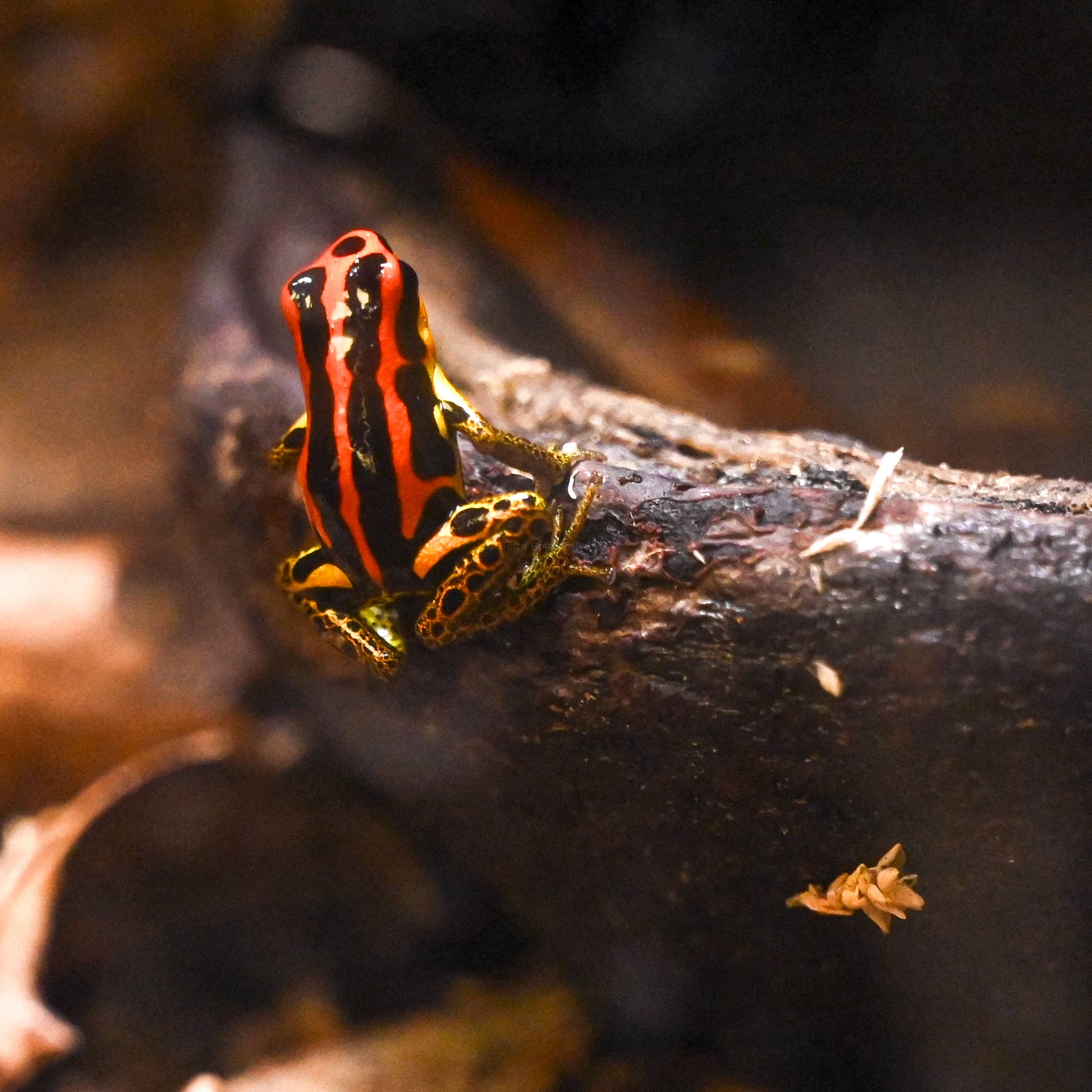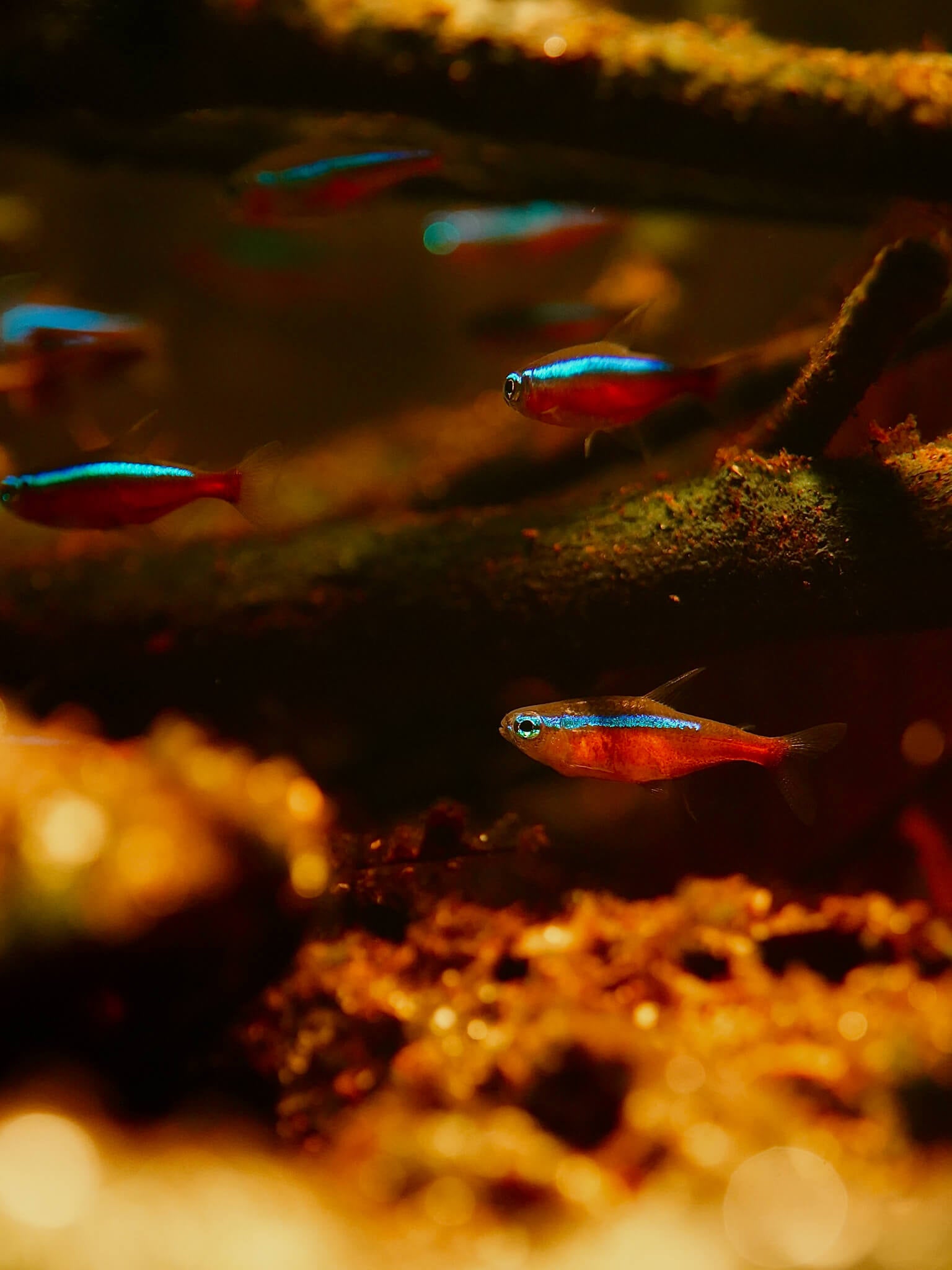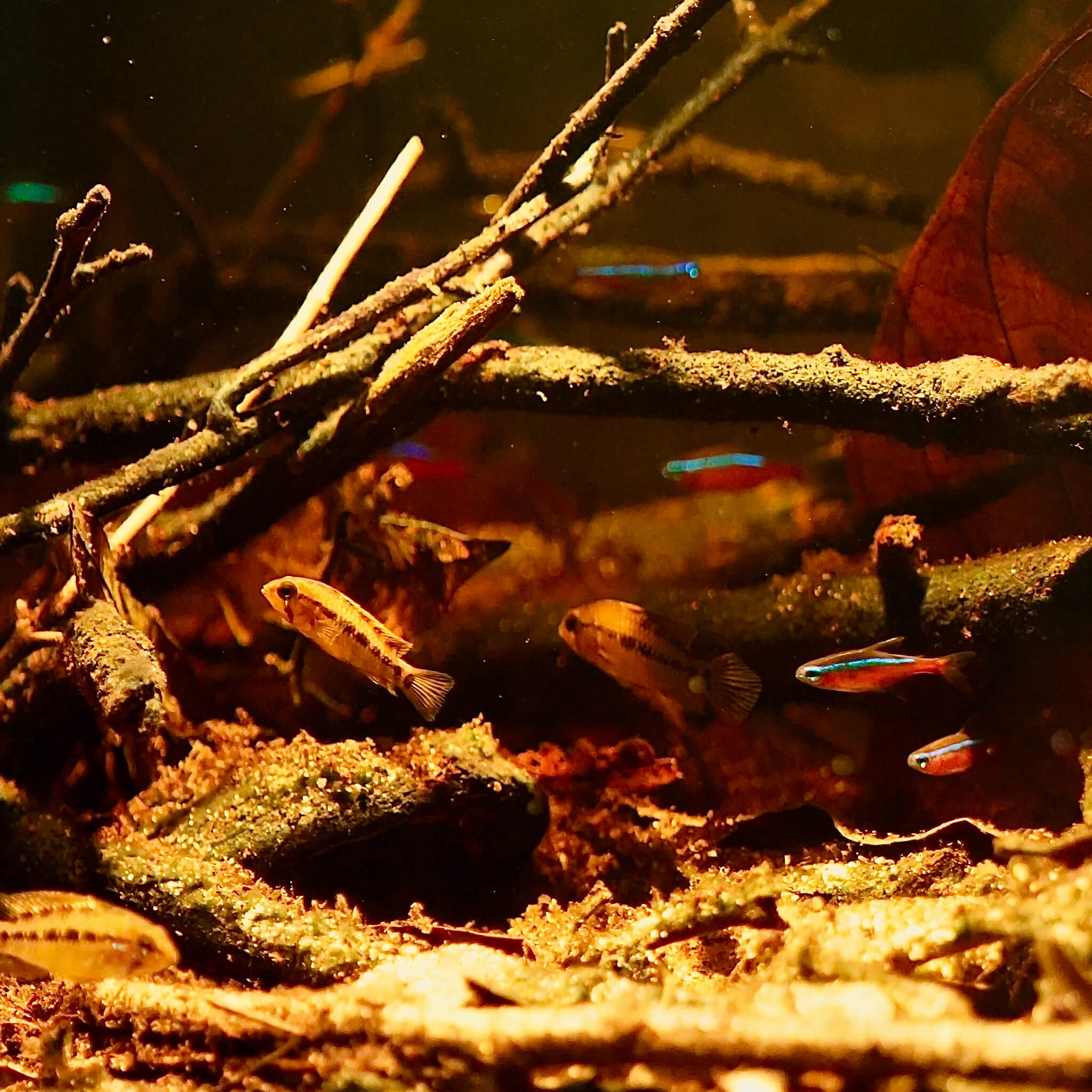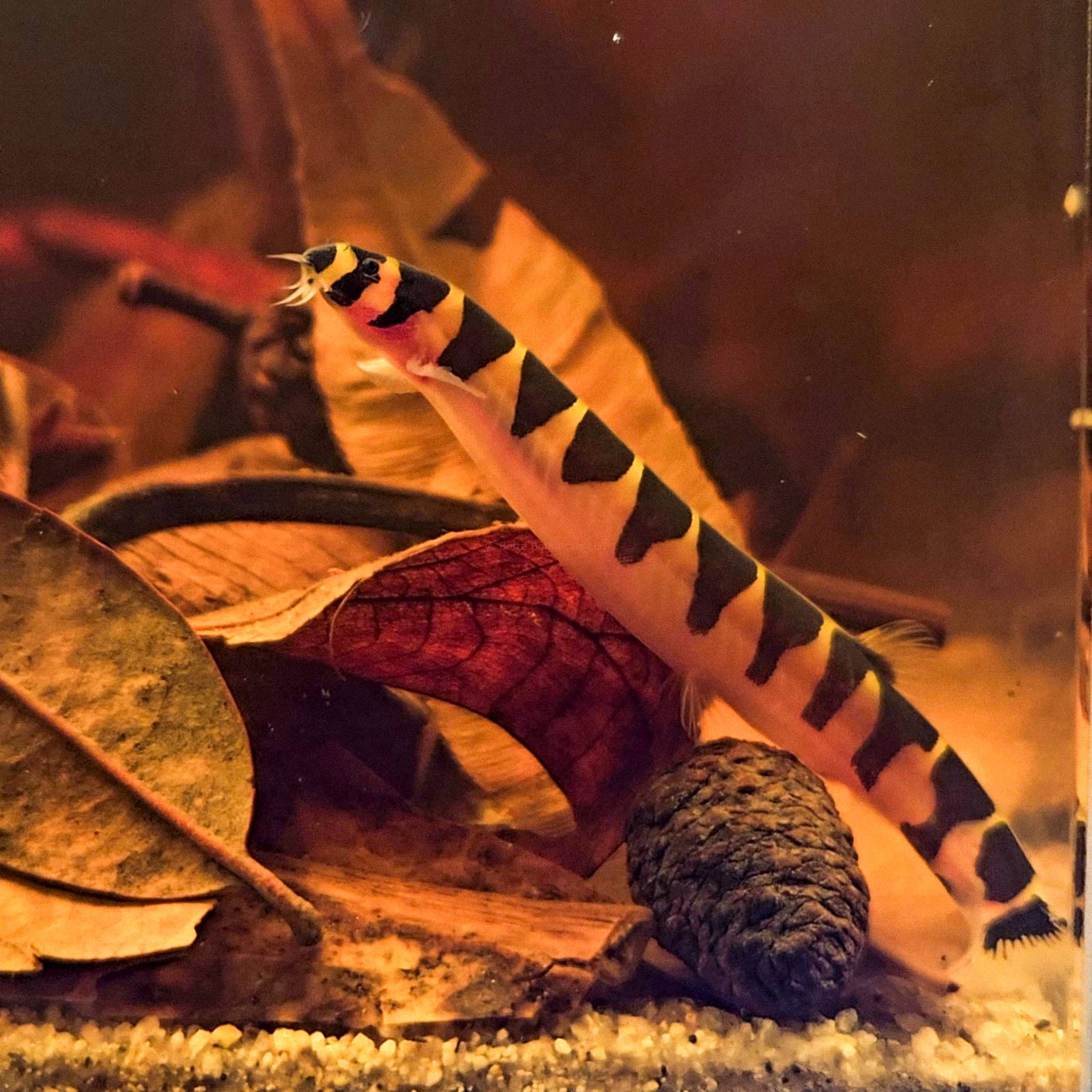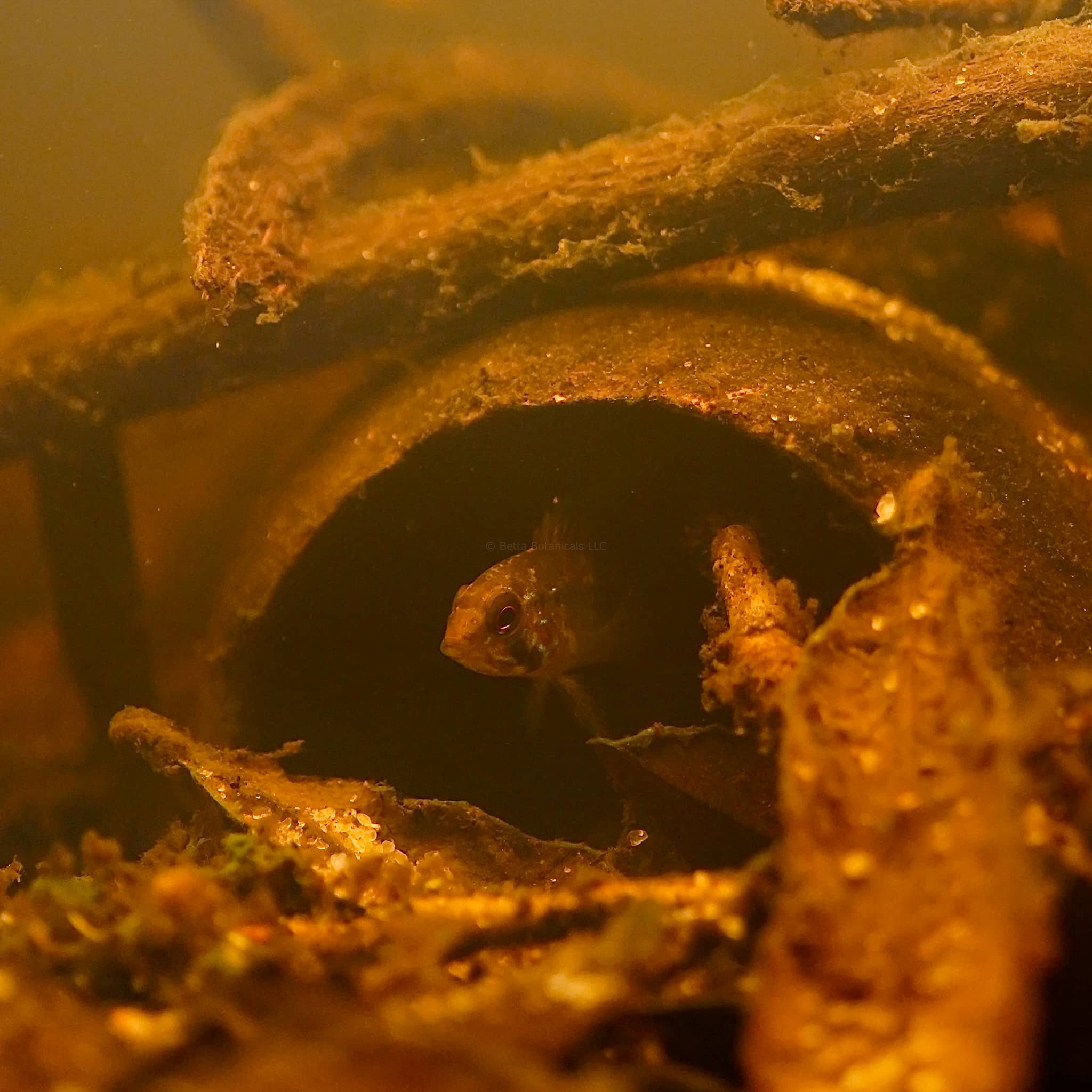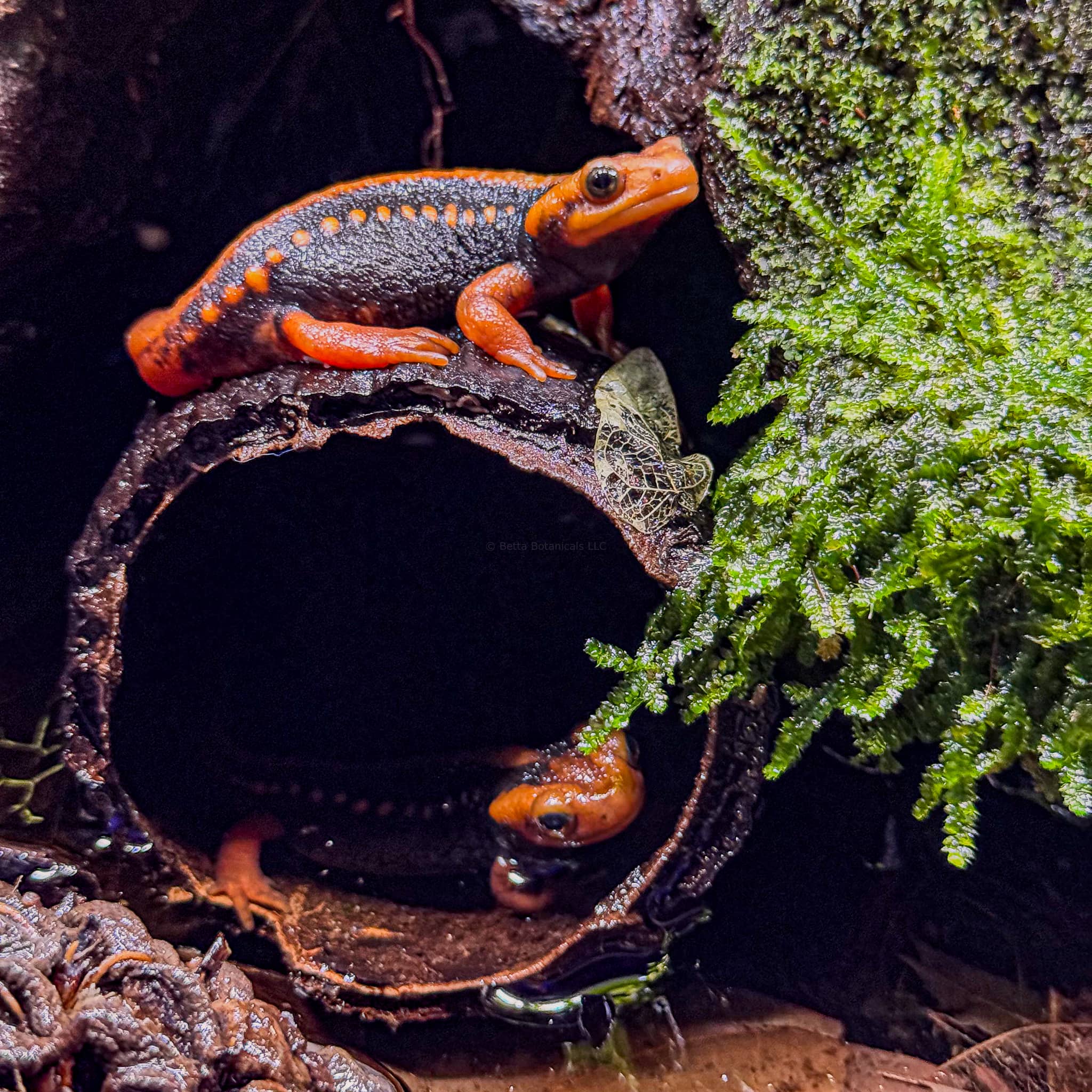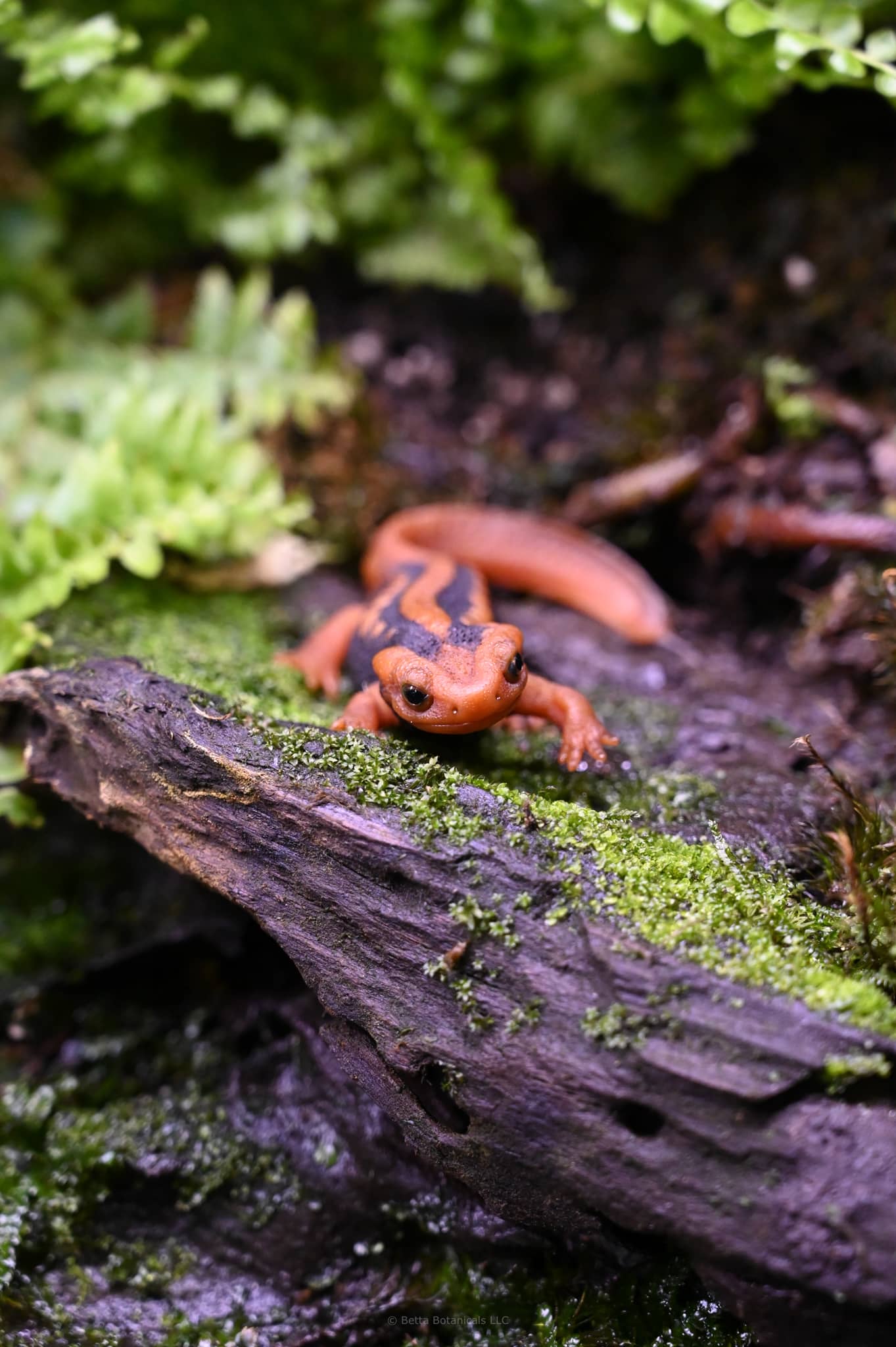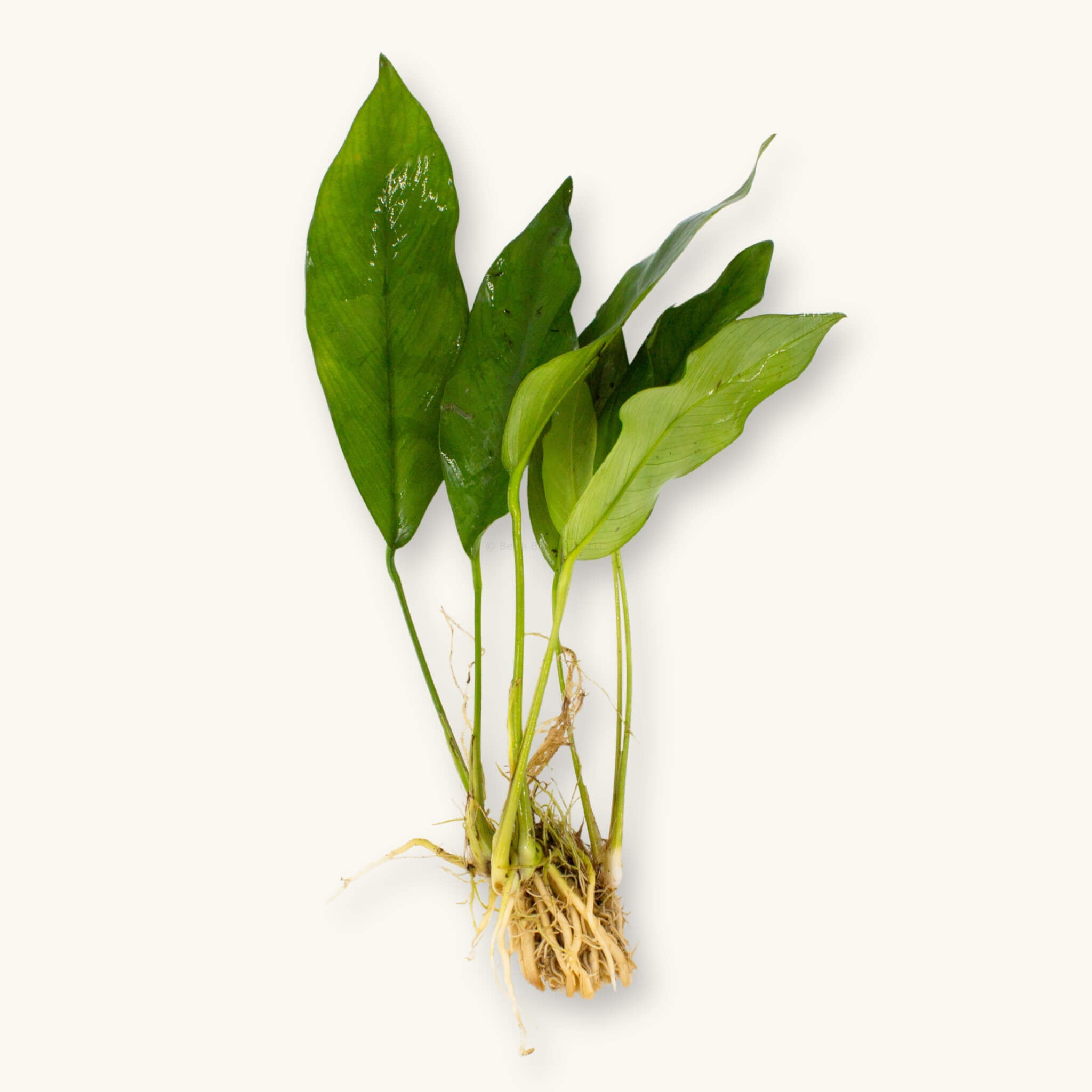
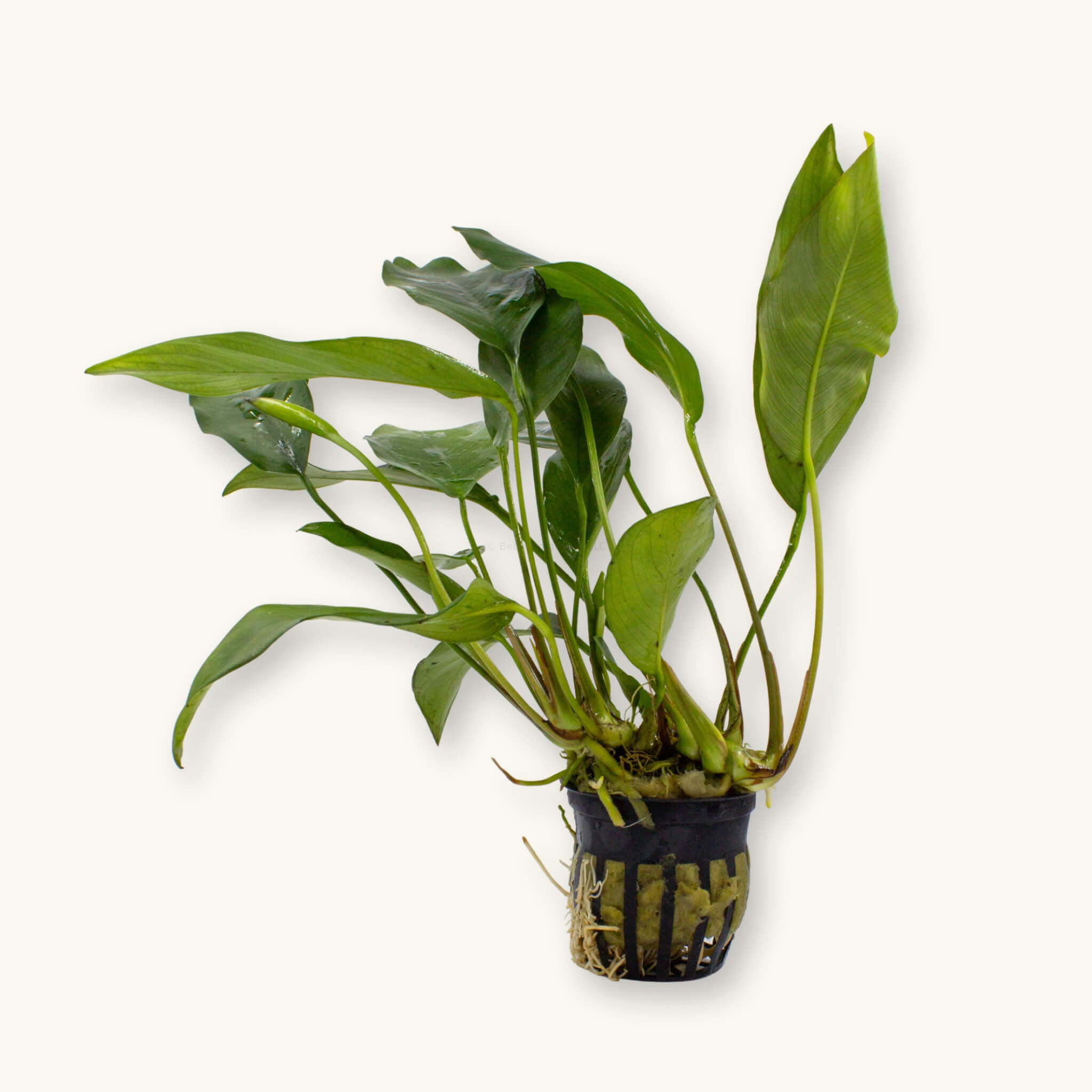
Anubias Nancon
Anubias Nancon
Scientific Name: Anubias sp. ‘Nancon’
Common Name: Anubias Nancon
Anubias Nancon is a cultivated hybrid originally developed by aquarist Bob Gasser and maintained through nursery propagation. This variety combines the resilience of Anubias barteri “Nana” with the elongated leaf shape of Anubias afzelii “Congensis,” resulting in a plant with narrow, pointed leaves. Because of its medium to large growth pattern, this low-tech anubias is ideal for the midground to background of the aquarium, or as the main center piece of a nano botanical method, blackwater, or biotope aquarium.
Like all Anubias species, Nancon thrives under low to medium light conditions and is remarkably adaptable to a wide range of water parameters. It is especially well-suited for blackwater, botanical method, and biotope aquariums, where it can be attached to driftwood, rocks, or even larger seed pods to help 'blur the lines' between hardscape and plants. Because its rhizome must remain above the substrate, this plant anchors best to surfaces where its roots can slowly creep and secure themselves.
Over time, Nancon develops dense clumps that provide cover for small fish and shrimp, while integrating into the varied textures and leaf shapes of the planted aquarium. Propagation is simple: the rhizome can be divided into sections, each carrying several leaves, and replanted or attached elsewhere to expand its footprint in the aquarium. With its strong leaves and steady growth, it also resists grazing from most fish and invertebrates, making it a durable, long-lasting choice for aquarists of all skill levels.
Caring for Anubias Nancon in Blackwater Aquariums
- Care Level: Easy
- Lighting Requirement: Low to medium conditions
- CO₂: Not required; grows steadily without supplementation
- Growth Rate: Slow to medium; steady rhizome expansion over time
- Tank Placement: Foreground to midground; attach to hardscape for best results
- Native Habitat: Hybrid origin; cultivated for aquariums, with traits similar to West African Anubias species
- Tint Tolerance: Thrives in low to high tannin environments typical of blackwater aquariums
All Plants may contain snails or snail eggs. We keep them in all of our tanks for the benefits they provide. Our blackwater aquarium plants are provided by H2OPlants in adherence to their Shipping and DOA Policies. Your curated selection will arrive in their packaging separate from your botanical & merch orders.

Anubias Nancon
Home is getting more natural
While the aesthetic appeal of botanicals and tinted water can be quite attractive to us, the recreation of nature to emulate water conditions, feeding patterns, spawning displays, and territory building are the true benefits botanicals provide to our critters.
Botanical FAQs
Compostable Packaging Promise
Our packaging is designed to return safely to the Earth, just like the botanicals inside. Every bag is BPA- and Phthalate-free, GMO-free, and contains no animal products. Each meets ASTM D6400 composting standards, ensuring it can fully break down in a home compost bin.
What are the Fluffy White Growths on my Botanicals?
That’s biofilm and fungi—what we call the “goo phase.” It’s one of the clearest signs that your aquarium is alive and functioning. These growths wax and wane naturally as botanicals decompose. They’re harmless, even beneficial, and will disappear on their own once microbial populations stabilize.
Will botanicals lower the pH of my water?
That depends entirely on your source water. In very soft or RODI water, botanicals can gradually lower pH as tannins and humic substances accumulate. In medium to hard tap water, buffering capacity often resists these shifts, and you may not notice much change. At Betta Botanicals HQ, our very hard water (350+ ppm) shows almost no pH change unless we use botanicals like Alder Cones or Macaranga Leaves.
When should I replace leaves or pods in my tank?
We recommend allowing botanicals to fully break down into detritus, since this fuels microbial life and enriches the substrate. You can remove them once they stop tinting the water, but you’ll lose some of their ecological benefits. Each time you add new botanicals, follow proper preparation and observe your livestock until you learn your aquarium’s rhythm.
Are your products just for bettas?
Nope. Our botanicals are safe for almost all aquariums, terrariums, vivariums, and paludariums. The only exceptions are goldfish and axolotls, which may ingest small pods like alder cones or casuarina cones. For those species, we recommend large leaves such as Indian Almond, Loquat, or Jackfruit.
What are Tannins?
Tannins are natural compounds released by leaves, seed pods, and bark as they decompose in water. They soften water, gently lower pH, and create the characteristic tea-stained tint found in blackwater habitats. But their role goes far beyond color—tannins fuel beneficial bacteria, fungi, and biofilms, which form the foundation of a healthy ecosystem. They also offer mild antifungal benefits and help reduce stress in fish by replicating the natural conditions they’ve evolved in. At their core, tannins are plant-derived antioxidants that connect your aquarium to the same processes at work in wild flooded forests and streams.




